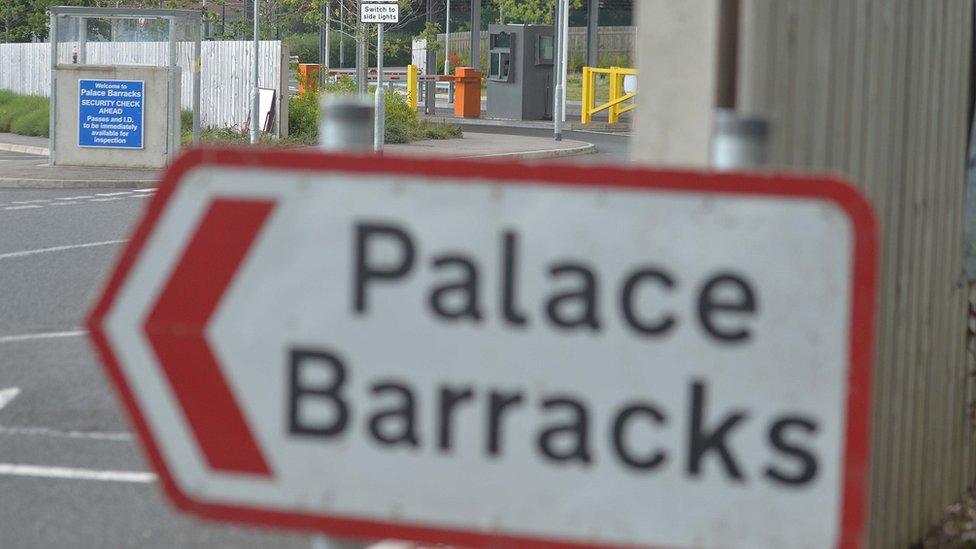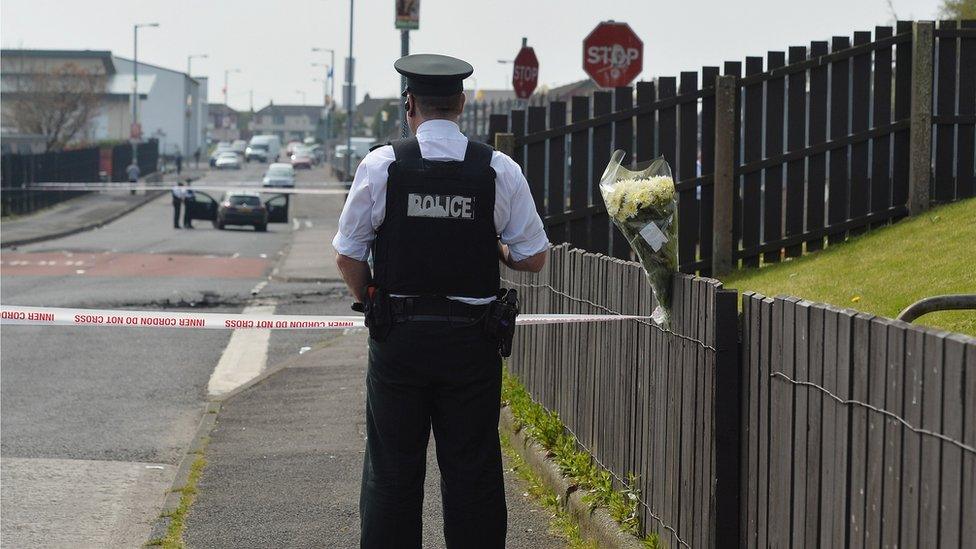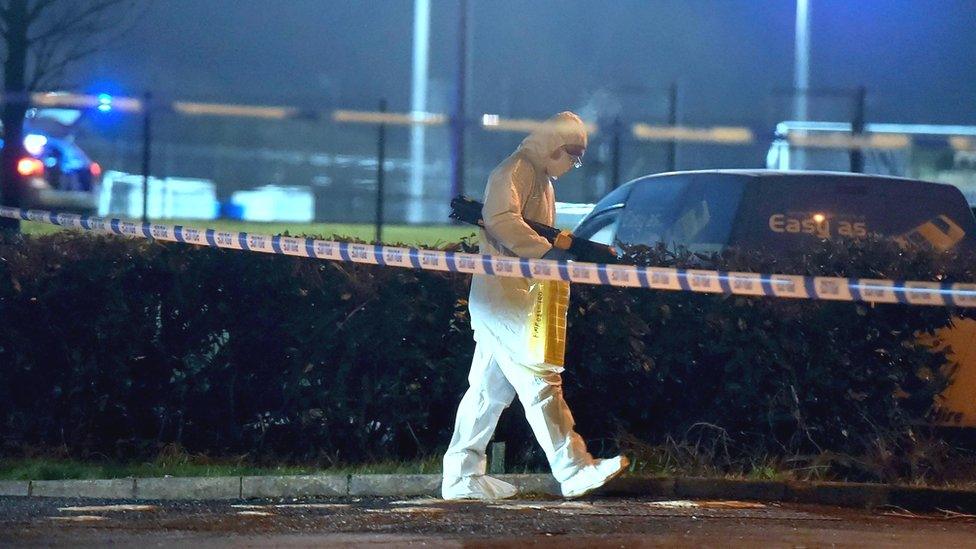New IRA 'still dangerous' after MI5 and PSNI's Operation Arbacia
- Published

It is "pre-emptive" to talk of the end of the New IRA after its alleged leadership was targeted by MI5 and the PSNI, high-level security sources say.
Eight men and two women are currently in custody accused of a total of 39 offences, including directing terrorism and trying to obtain Semtex explosives.
They were arrested in August after MI5 bugged two alleged meetings of the New IRA executive in February and July.
A top Security Service priority is to see how the group now re-organises.
"It still exists and is still dangerous," said the PSNI and MI5.
They spoke of the New IRA's "constant appetite" to obtain weapons overseas, but added: "It has not been very good at it."

The MI5 in Northern Ireland works out of its headquarters in Palace Barracks
"The New IRA has always been a top priority for us," a senior MI5 source in Northern Ireland said.
"There was no single trigger point for this operation. The meeting in February presented an opportunity to gather evidence."
'Appetite for weapons'
The New IRA was formed in 2012 and is said to have about 500 supporters and fewer than 100 prepared to plan and carry out attacks, principally against the police.
Last year it murdered journalist Lyra McKee during disorder in Londonderry.

20% of MI5's caseload
MI5 has up to 700 staff in Northern Ireland based at regional headquarters in Holywood, County Down.
It took over the lead role in intelligence gathering on dissident republicans from the police in 2007.
The operational framework was set out as part of the St Andrews Agreement a year earlier.
Primarily, it mounts surveillance, but also runs agents.
The agreement states all intelligence is "visible" to the PSNI, who are also to be informed of all its operations.
Overall, Northern Ireland accounts for about 20% of MI5's work, according to annual reports.
By comparison, almost 70% of MI5's activities are directed towards Islamist terrorism.


Journalist Lyra McKee was shot while observing disorder in Londonderry 2019
A senior source in the Police Service of Northern Ireland (PSNI) said: "To say it is finished is pre-emptive. The threat remains severe.
"A top priority is to see how it reorganises and restructures and we are closely monitoring that.
"It has tried to obtain weaponry overseas. There is an appetite for more weapons and that aspiration is constant.
"But it has enough to be dangerous and home-made explosives continue to be used in its improvised devices which allows it to keep manufacturing bombs."
Operation Arbacia is the latest but most significant action against dissident republicans of recent times and illustrates MI5's surveillance role which was formalised under the devolution of policing and justice in 2007.

A meeting of the New IRA is alleged to have taken place at this County Tyrone house earlier this year
About 20 people are currently before the courts as a result of three separate bugging operations in Newry, Lurgan and Omagh targeting the New IRA and the smaller Continuity IRA.
Dr Marisa McGlinchey, a political scientist who has studied dissident republicanism, said Operation Arbacia was "undoubtedly" a blow to the New IRA.
She said: "The message the organisation is putting out is that it is going to continue on as before, although it would be at a diminished capacity."
She added the organisation was "full of suspicion and paranoia" about MI5 infiltration.
It has been alleged in court that MI5 operated an agent within the New IRA, Denis McFadden, and solicitors for the 10 Operation Arbacia accused have claimed the case involves entrapment.
The human rights group, the Committee on the Administration of Justice, has said there is "an accountability gap" around oversight, with MI5's activities in Northern Ireland outside the reach of the Police Ombudsman and Policing Board.
"The problem is we don't have the powers to check that MI5 is operating within the law," said the group's deputy director, Daniel Holder.
"It isn't necessarily the case that it isn't, but we need an independent body to ensure informants are being run for lawful purposes."
- Published14 August 2023
